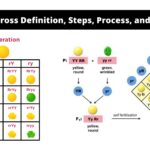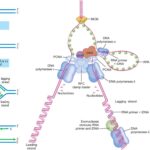O Level Biology 34 Views 1 Answers
Sourav PanLv 9November 2, 2024
Describe translocation as the movement of sucrose and amino acids in the phloem from parts of plants that produce or release them (sources) to parts of plants that use or store them (sinks)
Describe translocation as the movement of sucrose and amino acids in the phloem from parts of plants that produce or release them (sources) to parts of plants that use or store them (sinks)
Please login to save the post
Please login to submit an answer.
Sourav PanLv 9May 15, 2025
Translocation is the process by which organic nutrients, primarily sucrose and amino acids, are transported through the phloem tissue of plants. This movement occurs from areas of production or release (known as sources) to areas of utilization or storage (known as sinks). Here’s a detailed description of translocation, including its mechanisms and significance.
Key Concepts of Translocation
- Sources and Sinks:
- Sources: These are the parts of the plant that produce or release organic compounds. Common sources include:
- Leaves: The primary site of photosynthesis, where sucrose is synthesized from glucose and fructose.
- Storage Organs: Such as tubers (e.g., potatoes) or seeds that release stored carbohydrates during growth or germination.
- Sinks: These are the parts of the plant that utilize or store organic compounds. Common sinks include:
- Growing Tissues: Such as young leaves, stems, and roots where energy is needed for growth.
- Storage Organs: Such as roots and fruits that store nutrients for later use.
- Sources: These are the parts of the plant that produce or release organic compounds. Common sources include:
- Phloem Structure:
- The phloem is composed of several types of cells, including:
- Sieve Tube Elements: These are elongated cells that form the main conduits for transporting sugars and amino acids. They have perforated end walls (sieve plates) that facilitate flow between cells.
- Companion Cells: These cells are closely associated with sieve tube elements and assist in the transport process by providing metabolic support and loading/unloading nutrients.
- The phloem is composed of several types of cells, including:
- Mechanism of Translocation:
- Loading at Sources: Sucrose produced in the leaves during photosynthesis is actively transported into the sieve tube elements. This process often involves co-transport with protons (H⁺ ions), which are pumped out of companion cells into the surrounding tissue.
- Osmotic Pressure and Flow: The accumulation of sucrose in the phloem creates a high osmotic pressure, causing water to enter the sieve tubes from surrounding xylem vessels through osmosis. This influx of water generates turgor pressure within the phloem, driving the flow of sap toward sinks.
- Transport to Sinks: As the phloem sap moves through the sieve tubes, it travels to various sink tissues where sucrose and amino acids are actively unloaded from the phloem into surrounding cells. This unloading can occur via active transport or diffusion, depending on the specific requirements of sink tissues.
- Utilization or Storage: Once inside sink tissues, sucrose can be converted into glucose for energy through cellular respiration or stored as starch. Amino acids can be used for protein synthesis or other metabolic processes.
- Bidirectional Flow:
- Unlike xylem transport (which is unidirectional), translocation in phloem can occur in both directions, allowing plants to distribute nutrients efficiently based on their needs at any given time.
Importance of Translocation
- Nutrient Distribution: Translocation ensures that all parts of the plant receive essential nutrients for growth, development, and energy production.
- Growth Regulation: By adjusting translocation patterns based on environmental conditions and developmental stages, plants can optimize resource allocation to support new growth or respond to stress.
- Storage Management: Translocation allows plants to store excess carbohydrates during periods of high photosynthesis (e.g., spring) for use during periods when photosynthesis is reduced (e.g., winter).
0
0 likes
- Share on Facebook
- Share on Twitter
- Share on LinkedIn
0 found this helpful out of 0 votes
Helpful: 0%
Helpful: 0%
Was this page helpful?




